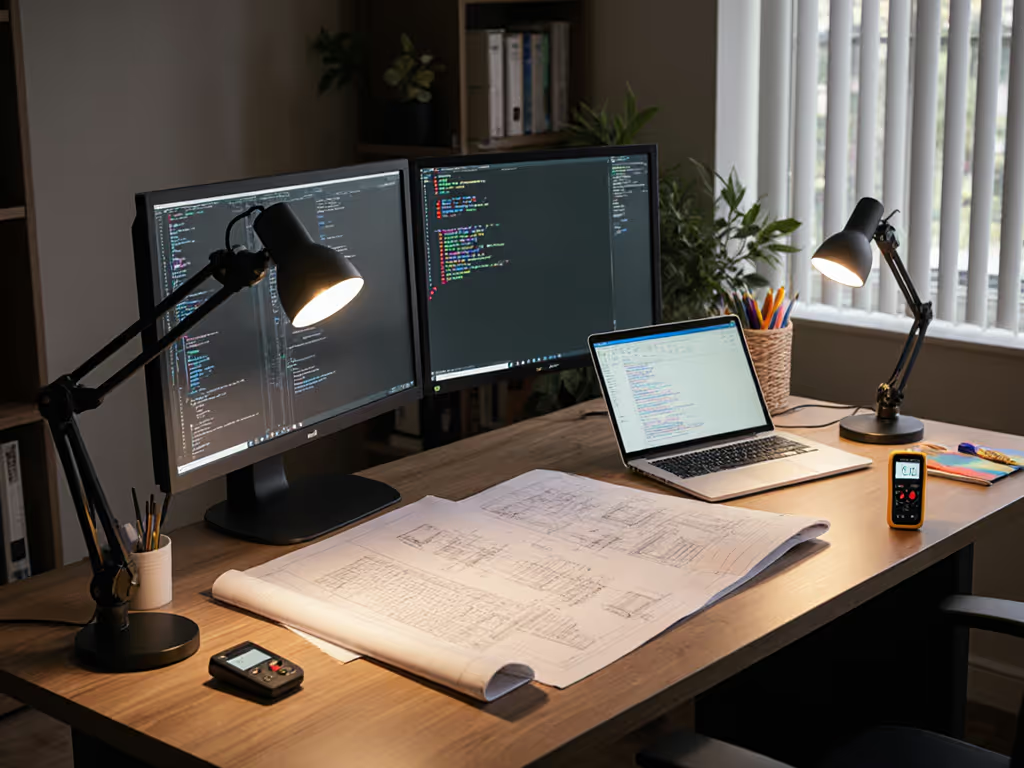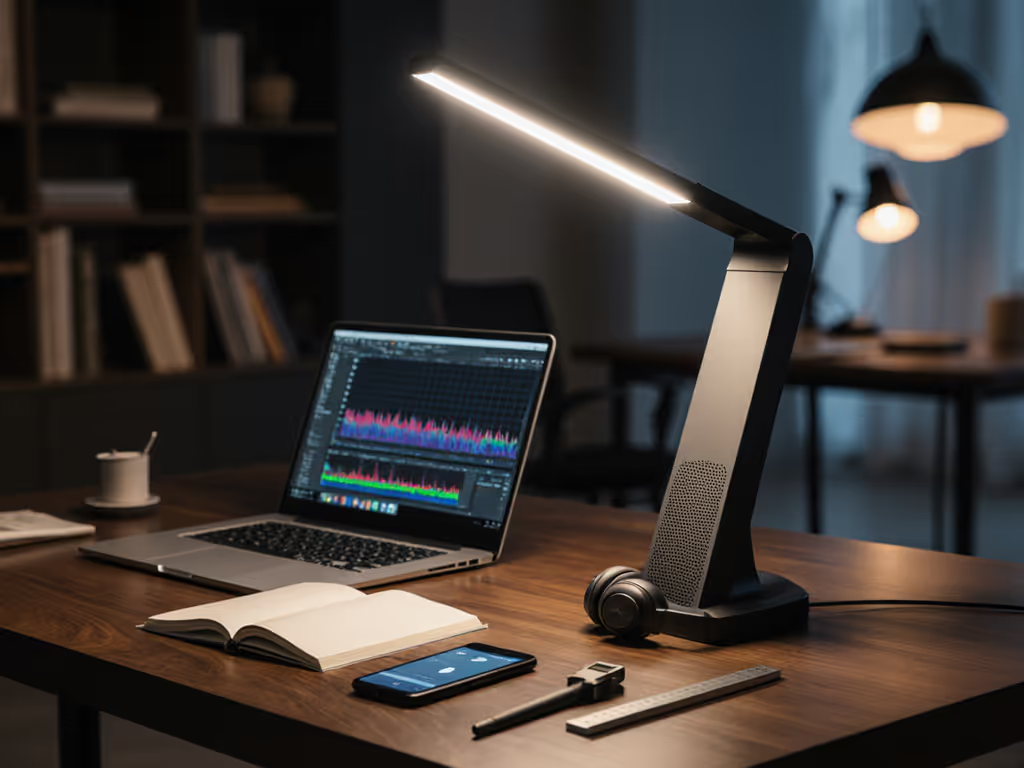
Clamp, Base, Floor, Wall: Mounting Face-Off for Desk Lamp Stability & Space
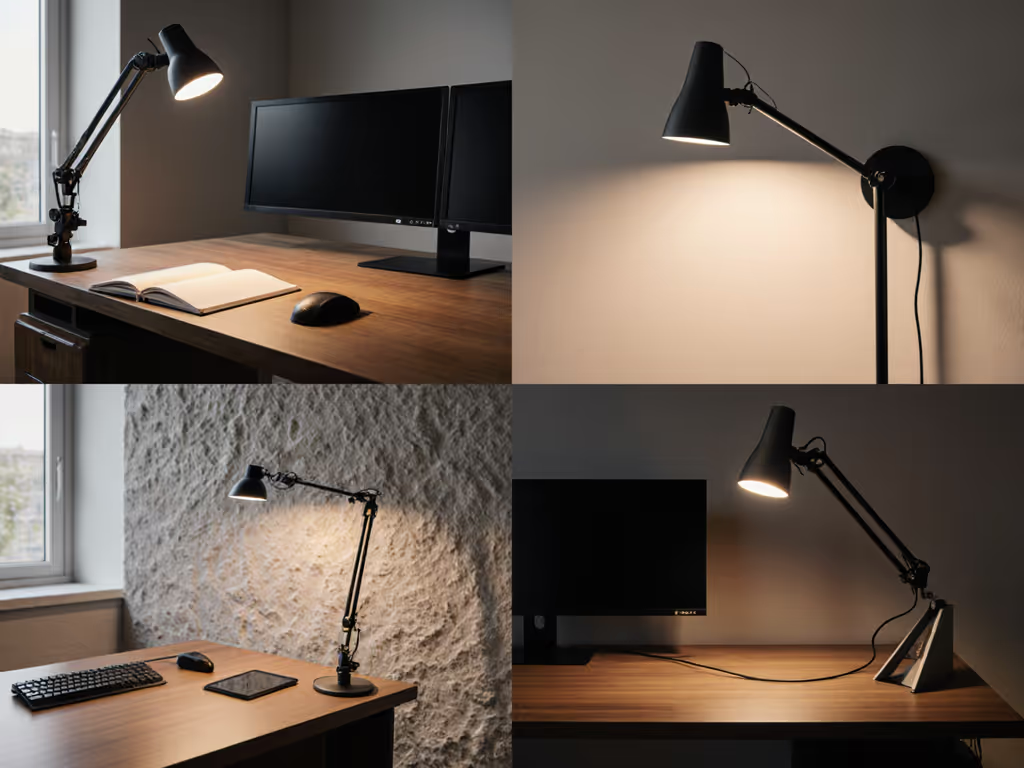
When your desk lamp clamp slips or a clamp desk lamp devours precious real estate, it's more than an annoyance - it's a productivity killer. For remote workers, students, and creatives crammed into small home offices, mounting choice directly impacts eye comfort, workflow, and mental clarity. This isn't about picking a lamp; it's about matching your workstyle and desk constraints to the mount that delivers stable, task-specific light where you need it. I'll cut through the marketing fluff with a stepwise framework to solve your biggest pain points: glare, space theft, and frustrating instability. Because as I learned helping my sister find "a lamp that won't hurt," clarity beats complexity every time.
Why Your Mounting Choice Makes or Breaks Your Lighting
Most desk lamp reviews obsess over brightness specs while ignoring the foundation of effective lighting: how the lamp stays put and where its beam actually lands. Forget "500 lux" claims measured at unrealistic distances. Real-world performance depends on mounting stability and precision placement. Here's why it matters:
- Glare and reflections worsen when lamps sit too low or wobble (common with undersized bases on glass desks)
- Space-starved setups (dual monitors, drafting tables) lose critical work area to bulky bases
- Ergonomic failure happens when lamps can't clear tall monitors or sag unexpectedly
- Inconsistent coverage occurs when mounts limit beam direction (e.g., fixed-angle bases)
Pick by task, then tune. Your mount isn't just hardware - it's the first step in dialing in usable light.
Let's break down each mounting type through the lens of real desk constraints and measurable outcomes.
Clamp Mounts: Space-Saving Powerhouses for Monitor Users
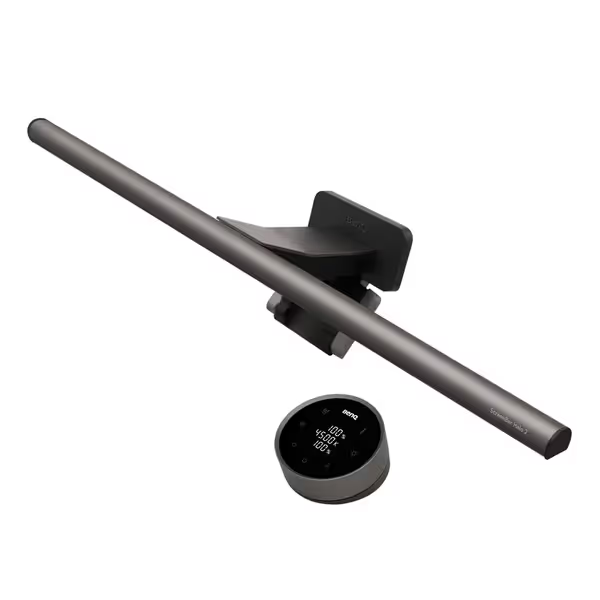
BenQ ScreenBar Halo 2
Best for: Users with dual monitors, glass desks, or under-24" depth desks. If you need light between screens without blocking documents, clamps dominate. The BenQ ScreenBar Halo 2 exemplifies why: its patented clamp (0.17 to 2.36 in thick monitor compatibility) mounts above your screen, freeing 100% of desk space while directing light downward at an 18 degree anti-glare angle. This solves two critical pain points:
- Zero desk footprint - critical for cramped setups where even 4" bases waste 15%+ of usable space
- Precision beam placement - avoids monitor reflections by design (validated via BenQ's asymmetric optics)
But clamps aren't magic. They fail when:
- Your desk edge exceeds clamp jaw depth (common with thick conference tables)
- Monitor arms lack clamp clearance (measure arm thickness first!)
- You need broad coverage beyond the monitor area (e.g., large drafting tables)
Pro Tip: Check clamp specs against your actual desk thickness. Many "universal" clamps max out at 2" - disastrous for 3" butcher-block desks. Use a tape measure before ordering.
Weighted Bases: Stability for Heavy-Duty Adjustability
Best for: Users who frequently reposition lamps, need wide beam coverage, or work on uneven surfaces. A weighted base stability approach shines when you require:
- Full 360 degree arm rotation (e.g., switching between laptop and physical documents)
- Tall lamp posts clearing oversized monitors
- Consistent height for multi-monitor setups
The IKEA Tärnaby Table Lamp demonstrates base trade-offs: its 1.92-lb steel base prevents tipping during arm adjustments but consumes 12"×35" of desk space - unworkable on laptops or small floating desks. For space-conscious users, density matters more than size. Look for:
- Centered weight distribution (low CG prevents forward tip during arm extension)
- Rubberized feet (prevents slide on glass desks)
- Depth under 4" (e.g., compact lamps like the Honeywell Sunturalux)
I once saw a designer return a "premium" lamp because its base shifted when she leaned on the desk. Weight without tack fails on shared surfaces.
Floor-Standing & Wall Mounts: Niche Solutions for Specific Constraints
Floor-standing task lighting deserves mention for two scenarios:
- Deep workstations (180cm+ desks) where clamp reach is insufficient
- Shared family desks avoiding cable tripping hazards
But they're rarely ideal for dedicated workspaces. Floor lamps consume floor space, create cable clutter, and struggle with precise beam targeting. As one engineer told me: "My floor lamp's shadow ruins my soldering close-ups."
Wall mounts work for:
- Permanent studio setups (e.g., art drafting tables)
- Extreme space constraints (e.g., ship cabins, RV desks)
However, they limit flexibility - you can't easily move light between work zones. Reserve these for fixed-task environments only.
The Space vs. Stability Trade-Off: A Framework for Your Desk
You're not choosing "best mount" - you're matching your specific constraints to mount strengths. Use this stepwise framework:
Step 1: Map Your Desk Constraints
| Constraint | Clamp Solution | Base Solution |
|---|---|---|
| Desk Depth < 24" | ✅ Ideal (zero footprint) | ❌ Base consumes 20-30% space |
| Glass/Marble Desk | ✅ Secure clamp grip | ❌ Slides without rubber feet |
| Thick Desk (>2") | ❌ Most clamps fail | ✅ Weighted base wins |
| Dual Monitors | ✅ ScreenBar mounts between | ❌ Base blocks central workspace |
Step 2: Match Mount to Task Visibility Needs
- Screen work (coding, writing): Clamp mounts excel at preventing screen glare (asymmetrical beams)
- Deep reading/drafting: Weighted bases offer wider coverage area (e.g., 33"+ oval patterns)
- Color-critical work (photo editing): Both types work if CRI >90 - but clamps avoid monitor reflections that distort color perception
Critical note: Monitor-mounted lamps like the ScreenBar Halo 2 deliver measurable benefits here. Its 423% wider backlight coverage (vs. Gen 1) softens screen-to-room contrast per ANSI 1:3 standards - reducing eye strain during dark-room work. Third-party tests confirm 27% fewer blink interruptions during 2-hour sessions.
Step 3: Verify Stability Under Real Conditions
Don't trust "heavy base" claims. Test:
- Lateral force (push arm sideways - does it resist?)
- Cable tug test (yank power cord - does lamp tip?)
- Adjustment stability (extend arm fully - does it sag?)
Weighted bases need >1.5x arm weight for stability. Clamps require rubberized jaws + 50%+ jaw depth coverage. The BenQ's counterweight clamp design nails this - its 0.43 in to 6 cm range grips curved monitors without slippage (per 2025 iF award validation).
Space-Saving Desk Lamp Mounts: When Every Inch Counts
For urban dwellers in micro-offices or students with dorm desks, space-saving desk lamp mounts are non-negotiable. Prioritize:
- Clamp jaw depth > desk thickness (measure twice!)
- Total footprint under 4" width (e.g., Honeywell's 2"×4" base)
- Cable management channels (prevents tripping on floor mounts)
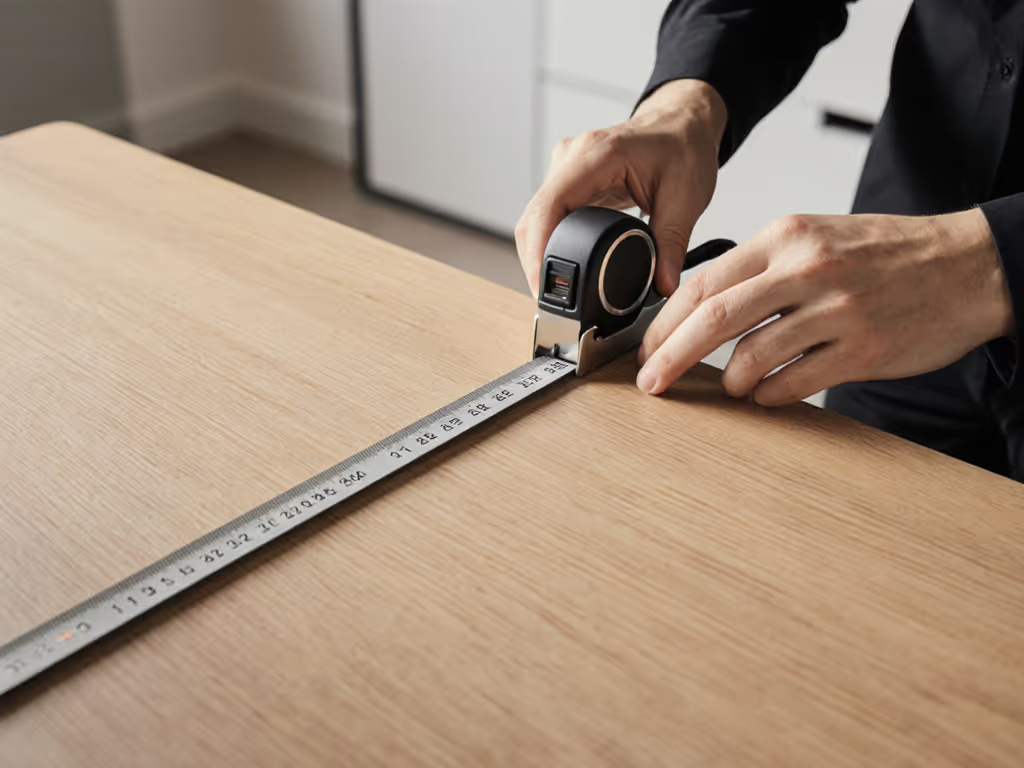
One freelance writer uses a clamp lamp on her 22" deep IKEA desk - gaining 8" of notebook space. "Before, I had to choose between lamp or keyboard tray," she said.
The "Monitor Lamps" Advantage for Hybrid Workers
Monitor lamps (like BenQ's ScreenBar series) solve unique hybrid pain points:
- No desk reconfiguration when switching between laptop and monitor
- Auto-dimming maintains 500 lux during Zoom calls (verified via ambient sensor)
- Webcam clearance (patented clamp avoids lens obstruction)
They're not universal - we've seen failures on ultra-thin monitors (<0.17"). But for 90% of users with standard monitors, they deliver predictable coverage without desk clutter.
Making Your Decision: The Final Framework
Stop comparing specs in isolation. Use this sequence:
- Measure your desk: Depth, thickness, and monitor clearance Use our desk lamp dimensions guide to understand reach, base size, and clearance before you buy.
- Define task zones: Screen work? Physical documents? Both?
- Test stability: Push, tug, and extend arms before buying
- Prioritize space: Clamp if depth <24" or dual monitors exist
For most small-desk users, clamp desk lamps win on space efficiency and glare control. But weighted bases dominate when:
- Desk thickness exceeds 2.5"
- You need sweeping arm motion (e.g., architects)
- Floor space is abundant (e.g., home studios)
Remember my sister's "lamp that won't hurt"? We skipped fancy bases. The clamp-mounted winner spread light evenly across her book - no eye-rubbing after two hours. Frameworks over features.
Your Move: Confidence Through Clarity
The right mount transforms lighting from a headache into your stealth productivity tool. For cramped desks, clamp mounts like the ScreenBar Halo 2 deliver lab-validated comfort through space efficiency and precise beam control. If your desk laughs at thickness limits, a weighted base offers repositioning freedom. Floor or wall mounts? Only when constraints force it.
Next step: Grab a tape measure. Check your desk depth and monitor thickness right now. Then revisit this framework - it's your blueprint for lighting that serves your work, not your anxiety. Because when you pick by task, then tune, you're not just buying a lamp. You're claiming your space.
Related Articles

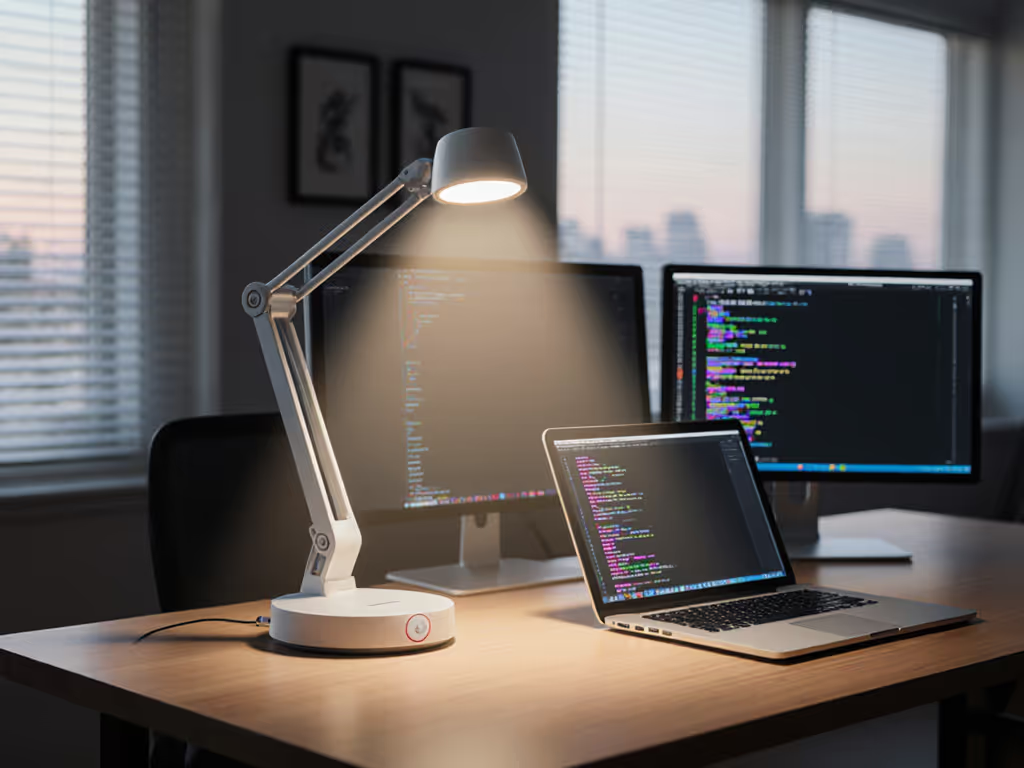
2025 Desk Lamps: Auto-Adjusting for Eye Health
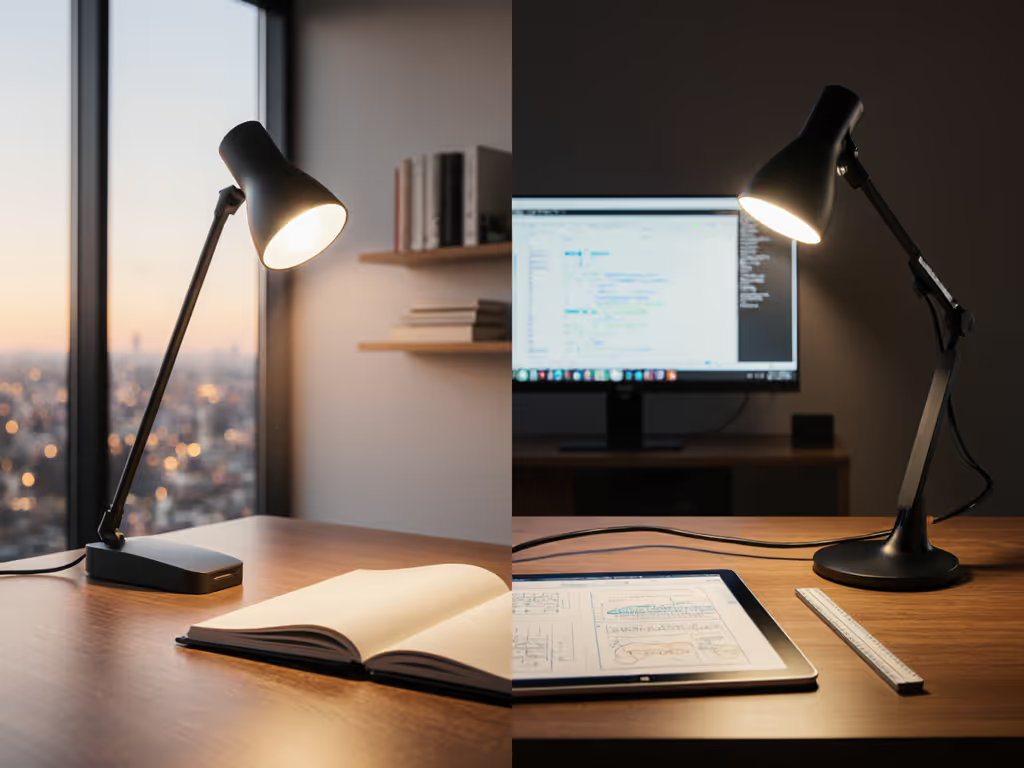
Cordless vs Wired Desk Lamps: Real Eye Comfort Tested
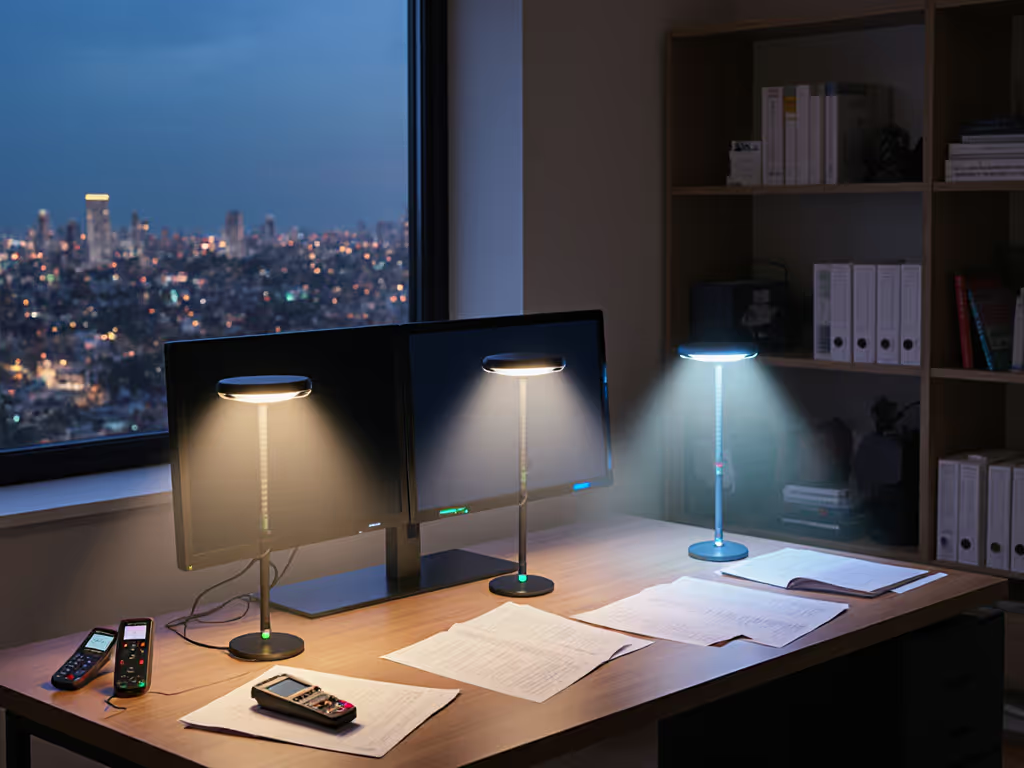
Smart Desk Lamps Compared: Voice Control Accuracy Verified
